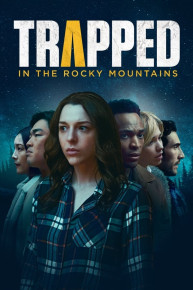
Getting Out
Where to Watch Getting Out

Getting Out is a gripping psychological drama that delves into the tumultuous journey of the human spirit, set against a backdrop of personal struggle and redemption. Released in 1994 and starring Rebecca De Mornay, Robert Knepper, and Carol Mitchell-Leon, the film offers a profound exploration of despair, hope, and the often challenging path to self-liberation.
The narrative centers around Mary, portrayed with remarkable depth by Rebecca De Mornay. Mary is a woman who has recently emerged from incarceration, facing the daunting task of reintegrating into society while grappling with the ghosts of her past. De Mornay's performance is a compelling portrait of vulnerability and resilience, capturing the internal conflict that defines Mary’s life after prison. She embodies the character's struggle with authenticity perfection, highlighting the complexities of a woman trying to reshape her identity in the wake of trauma.
As Mary attempts to navigate her newfound freedom, she encounters a series of challenging circumstances that test her resolve. The film introduces a cast of characters who play pivotal roles in her journey, including Robert Knepper's character, whose relationships with Mary add layers of tension and emotional depth to the storyline. Knepper’s portrayal is convincingly multifaceted, contrasting moments of charm with darker, more invasive traits that create a palpable sense of unease.
The film’s narrative thrust centers around Mary's internal battle between her desire for a fresh start and the lingering effects of her past choices. It explores the systemic challenges facing those reintegrating into society, illuminating the stigma and barriers they often encounter. The screenplay dives into themes such as trust, fear, and determination, portraying Mary’s interactions with the world around her as a delicate dance of hope and disillusionment.
The supporting characters in Getting Out contribute significantly to the richness of the narrative. They serve as reflections of Mary’s struggles and aspirations, embodying different responses to their own pasts. These dynamic interactions not only enrich the storyline but also amplify the emotional stakes, inviting viewers to empathize with the characters’ predicaments. Carol Mitchell-Leon, in her role, brings depth to a character who intersects with Mary’s life in a way that underscores the film's exploration of friendship, empathy, and the need for connection in a fractured world.
The direction of the film is marked by a keen understanding of pacing and emotional resonance. Tension builds gradually as Mary’s circumstances unravel, creating a sense of urgency that keeps the audience engaged. The cinematography complements the narrative’s tone, utilizing stark contrasts between the allure of freedom and the weight of Mary’s past, effectively portraying her internal struggles as visual metaphors.
As the plot unfolds, the film does not shy away from exploring the raw emotional landscape faced by those recovering from trauma. It reveals not just the external struggles of finding a job or a place to live but also the more profound, internal battles that emanate from a haunted history. The first half of the movie methodically establishes Mary’s struggle, creating an atmosphere filled with tension and uncertainty. While hope lingers as a distant possibility, the reality of her situation is often harsh and confronting.
Musical elements and sound design in Getting Out further enhance the emotional depth and urgency of the narrative. The score serves as an undercurrent that captures Mary’s turmoil and yearning for peace, while the sound of her footsteps echoes her isolation and determination. Each auditory element is carefully crafted to resonate with the viewer’s experience of the film, adding a rich layer to Mary’s journey.
Throughout the film, the script remains poignant and reflective, encouraging audiences to question and consider the societal constructs around crime, punishment, and redemption. It invites viewers to reflect on the difficult balance between judgment and empathy, compelling them to reconsider their perceptions of those who have stumbled in their past.
In conclusion, Getting Out is a masterful exploration of resilience and the complexities of reintegration into society after incarceration. With powerful performances, especially by Rebecca De Mornay, and a thoughtful narrative that raises important questions about identity, choice, and redemption, the film offers a compelling experience that resonates long after the credits roll. It stands as a testament to the strength of the human spirit and the enduring quest for liberation, making it a profound addition to the drama genre.
Getting Out is a Drama, Thriller, TV Movie movie released in 1994. It has a runtime of 100 min. Critics and viewers have rated it moderate reviews, with an IMDb score of 5.8..
How to Watch Getting Out
Where can I stream Getting Out movie online? Getting Out is available to watch and stream at Amazon Prime, FuboTV, Crackle, The Roku Channel Free.












































